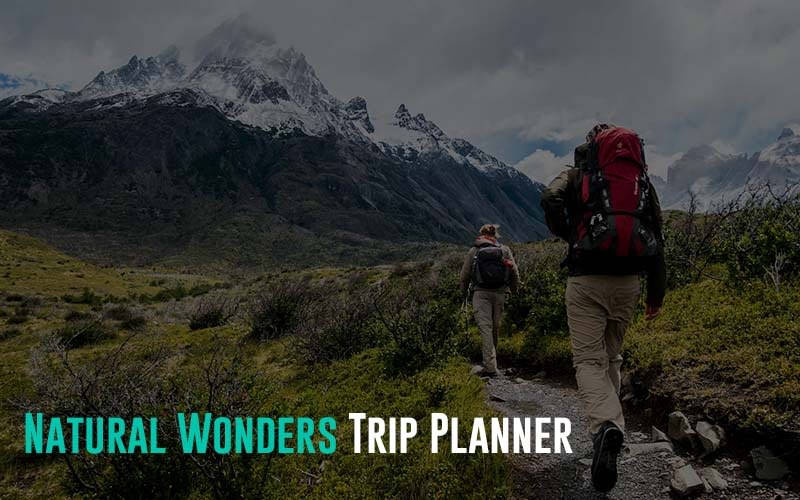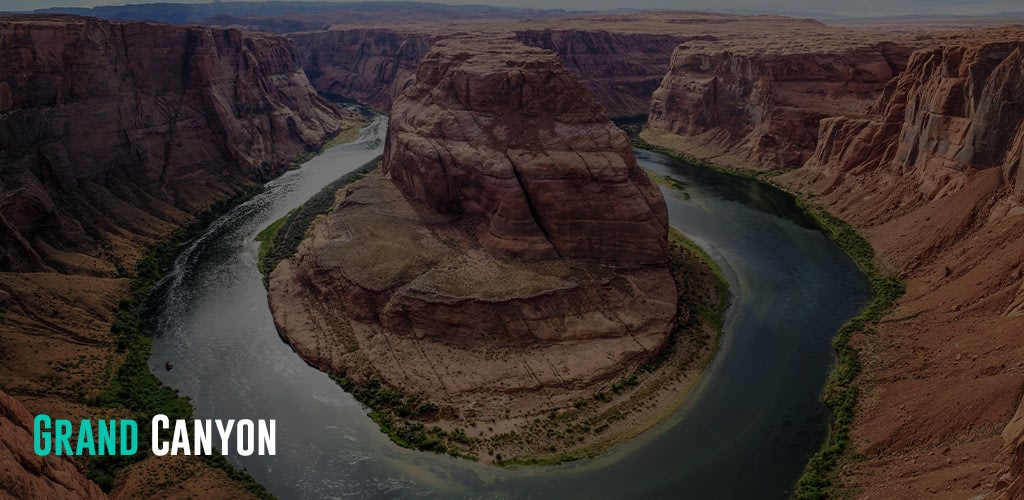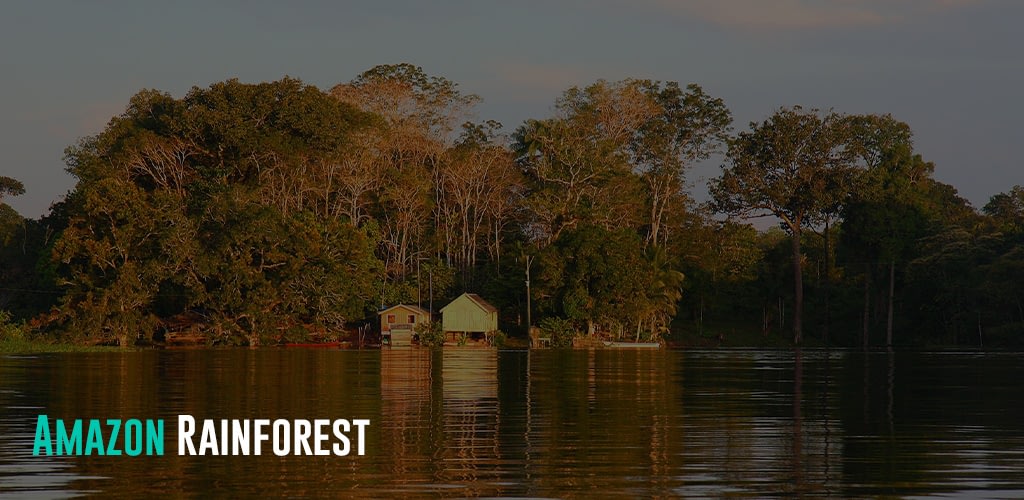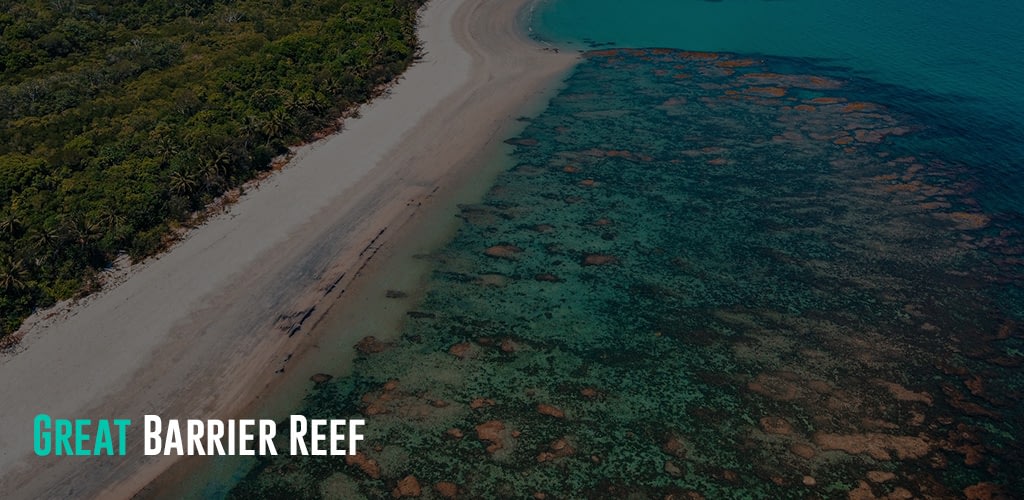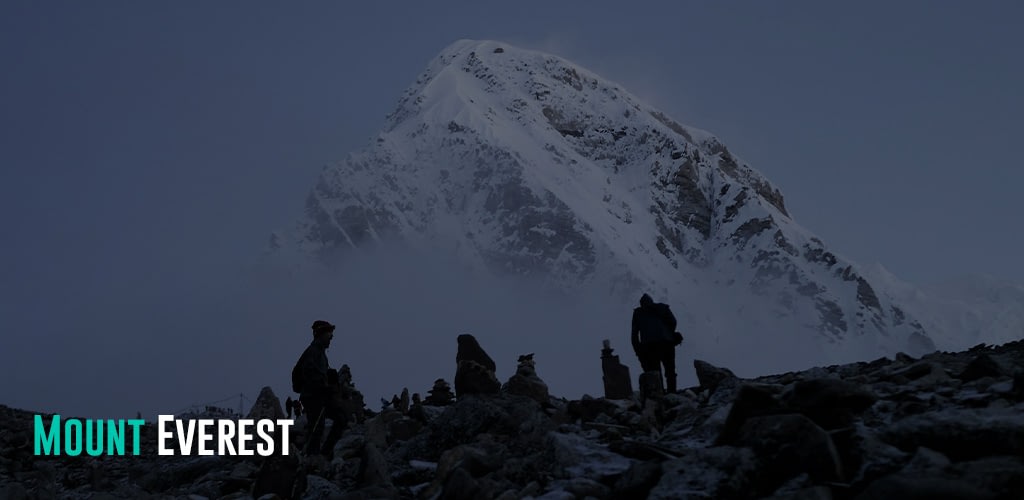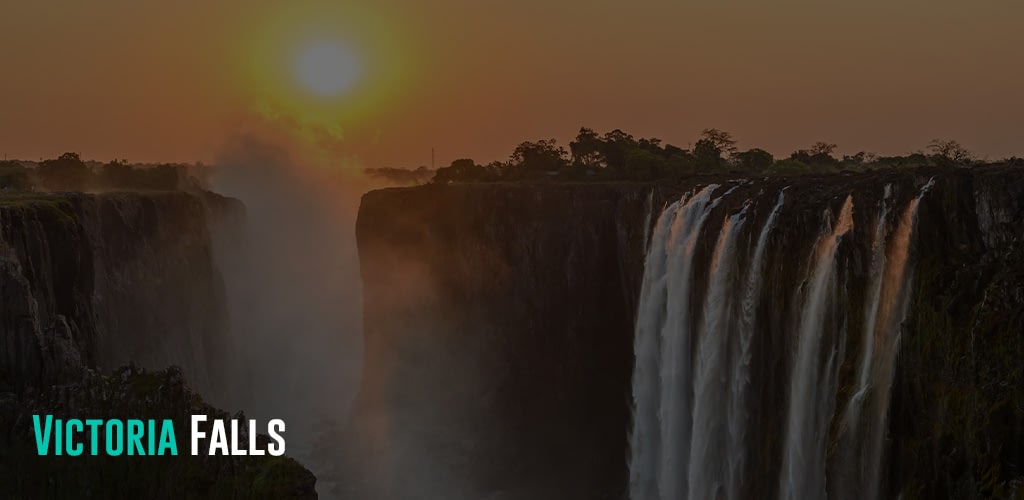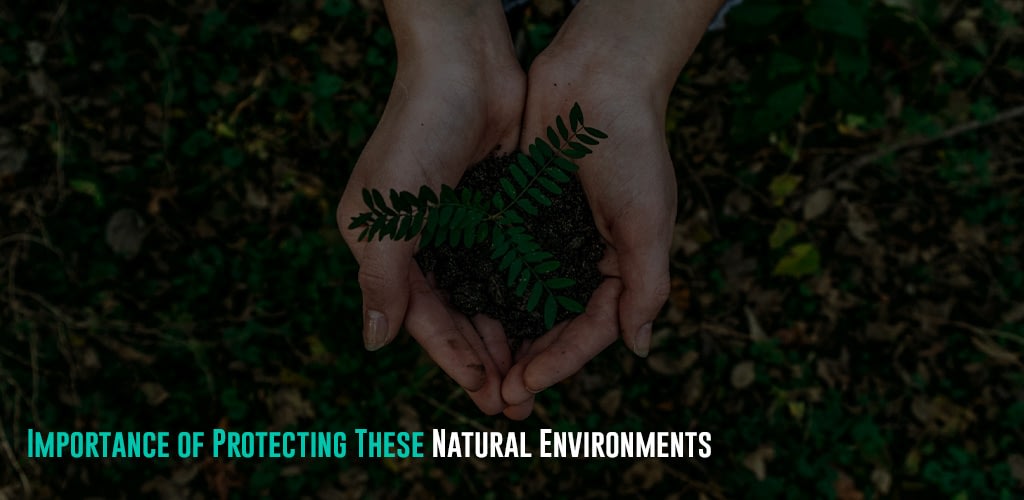As we become a generation that spends more time indoors instead of exploring nature outside, traveling to see natural wonders becomes an experience to cherish forever. Compared to the monotonous theme of the four walls that surround us, natural wonders offer us the unparalleled sensation of awe and appreciation for our planet.
Many of the natural wonders have breathtaking vistas that we certainly do not come across every day. We get to witness the beauty and expansiveness of the world around us and feel our worries melt away. Connecting with nature is a surefire way to feel more grounded, present, and in tune with the world around us.
Besides getting to witness the diversity of landscapes, traveling to the natural wonders of the world empowers us with a deeper understanding of environmental conservation. Be it the lush Amazonian rainforests or the intricate ecosystems of the Great Barrier Reef, people surely learn more about how important these natural treasures are for the planet and other wildlife.
Looking to curate a natural wonders trip planner? In this guide, we will discuss the top natural wonders travelers should visit.
Featured Image Source
What Are The Top Natural Wonders of the World?
Here is a list of some of the top natural wonders of the world, why you should visit them, and the ideal time to plan your trips.
1. Grand Canyon (USA)
The Grand Canyon is a natural rock formation located in the state of Arizona, USA. It was formed over millions of years through the erosive action of the Colorado River, which carved through layers of rocks to reveal the mesmerizing canyon we see today. It is well known for its immense size and complex geological formations, and of course, for offering spectacular views at every turn. People especially rave about the sunrise and sunset views from the canyon, which are said to be truly enchanting.
The best way to experience the Grand Canyon is to hike its many trails and spend plenty of time taking in the scenic vistas at its many viewpoints. A guided tour would be ideal for those who wish to know more about its culture and history and can also help in finding the right paths to explore.
When making a natural wonders trip planner, people should plan their Grand Canyon visit to be during the Spring and Fall seasons, as these time periods offer milder temperatures and fewer crowds as opposed to the busy summer season.
Conservation efforts for this iconic natural wonder involve bringing back natural habitats, controlling erosion, and teaching visitors about the area. There are also rules for tourism and fun activities that ensure the canyon remains beautiful and maintains its healthy ecosystem.
2. Amazon Rainforest (South America)
The Amazon Rainforest is a vast biome that spans eight South American countries, which include Brazil, Bolivia, Peru, Ecuador, Colombia, Venezuela, Guyana, and Suriname—and French Guiana, an overseas territory of France. The natural wonder has been formed over millions of years with the help of a combination of geological processes, climate changes, the evolution of plant and animal life, and continental drift. It is famous for being the largest tropical rainforest on the planet and earns its iconic status for housing biodiversity unlike any other place.
If anyone is looking to add this site to their natural wonders trip planner, the best way to explore the Amazon Rainforest is through guided tours led by local tourist guides so that one can learn more about the millions of species of plants and animals that live here. Jungle trekking and other immersive cultural experiences with indigenous communities are also popular choices among tourists.
The best time to visit the Amazon Rainforest is the dry season so that heavy rainfall doesn’t dampen sightseeing opportunities. June to October is the perfect time to plan a trip to the rainforest, as there are fewer insects and better opportunities to spot wildlife because of less foliage.
There are several conservation initiatives to protect and preserve this lush rainforest, including establishing the best national parks in the world, combatting illegal logging and deforestation, and enforcing sustainable land use practices. Keen efforts are also made to support indigenous rights, which mostly include community-based conservation projects to maintain the ecological integrity of this natural wonder.
3. Great Barrier Reef (Australia)
The Great Barrier Reef is the world’s largest coral reef system and truly a sight to behold. With its vibrant marine life and breathtaking underwater landscape, this natural wonder attracts tourists, marine biology enthusiasts, and divers from all over the world. Located off the coast of Queensland, Australia, the Great Barrier Reef spans over 2,300 km. This natural wonder was formed over millions of years through the accumulation and growth of coral polyps on the skeletons of previous corals. Due to the flooding of the coastal plains in this area around 20,000 years ago, the shallow plains enabled the growth of at least 300 types of hard corals. The growth of certain types of algae provides a purplish-red rim to the reef, making it a truly spectacular wonder of nature.
The Great Barrier Reef is renowned for its extraordinary biodiversity, the amalgamation of colors, and complex marine ecosystems that co-exist beautifully. It is labeled a UNESCO World Heritage Site as well.
To experience the true beauty of this natural marvel, tourists should join guided snorkeling or diving tours, which not only enable them to explore the intricate formations and marine life but also ensure minimal impact on the fragile ecosystem. The dry winter season in Australia, ranging from May to October, will provide the best visibility for divers and snorkelers looking to add this spot to their natural wonders trip planner. It is best to avoid the Australian summer months between December and February, which is the stinger season. Those who enjoy whale watching should book their trips for September or October.
In the recent past, the Great Barrier Reef has experienced significant damage, which can be attributed to climate change, coral bleaching, and cyclones. Rising sea temperatures and ocean acidification are causing damage and death to the corals at a rapid pace. Several organizations have committed to conservation efforts in the Great Barrier Reef, which include the demarcation of marine protected areas, sustainable tourism practices, further research on coral reefs, management of water quality, and more. Only with sincere and consistent conservation efforts can we preserve this natural wonder for the years to come.
4. Mount Everest (Nepal/China)
If you asked someone, ‘What is the most famous natural wonder of the world?’, they would probably tell you that it’s Mount Everest.
Mount Everest is a majestic mountain peak located in the Himalayas mountain range of Asia. It is the tallest mountain on Earth and stands at a spectacular height of 8,848 meters (29,029 feet) above sea level. Located on the border between Nepal and China, this towering mountain is a symbol of human ambition for those who wish to conquer the greatest of heights. The Himalayas were formed by the collision of the Indian and Eurasian tectonic plates, lifting up the Earth’s crust and creating the highest mountain range in the world.
People all over the world wish to lay their eyes on the breathtaking snow-capped mountains and valleys of this region and especially catch a glimpse of Mount Everest. On the other hand, adventurers and mountaineers dream of scaling this majestic peak and adding this awe-inspiring experience to their natural wonders trip planner.
Those who wish to visit the Himalayas should opt for mountaineering expeditions or organized treks, which usually start at the base camps in Nepal or Tibet. One thing to note is that scaling Mount Everest requires meticulous planning and plenty of physical preparation. The guidance of experienced sherpas will definitely be helpful in achieving this feat, as it is a risky one.
The best time to climb Mount Everest is during Spring (April to May) and Autumn (September to October). The weather conditions during these months are more stable, and people can witness clear skies. Avoid winter months and extreme weather, as there are higher chances of avalanches during this time.
Climate change is affecting the Himalayas, too, as seen by rising temperatures, increased melting of glaciers, and changes in precipitation patterns. This affects the environment in the neighboring areas as well, along with causing difficulties for people living there. Conservation efforts to protect Mount Everest and the Himalayan mountain range include regulation on climbing permits, waste management initiatives, and sustainable tourism practices. Plenty of research is also being carried out to understand the effects of climate change on the region and develop strategies to minimize its impact.
5. Victoria Falls (Zambia/Zimbabwe)
Victoria Falls is a waterfall formation located on the border between Zambia and Zimbabwe in southern Africa. This natural wonder is one of the world’s largest waterfalls and is famous for its grand size and thunderous sound. Victoria Falls was formed over thousands of years by the gradual erosion of the Zambezi River’s basalt plateau. This erosion caused a series of gorges and created this natural masterpiece that cascades over a precipice.
The mile-wide Zambezi River falls from a height of 345 meters and produces a rainbow-tinted mist, earning Victoria Falls its local name, Mosi-oa-Tunya, which translates to “The Smoke that Thunders.”
People who wish to add Victoria Falls to their natural wonders trip planner should book guided tours that offer breathtaking views of the falls from multiple viewpoints. Tourists can also sign up for walking tours, boat cruises, and other adventure activities like bungee jumping and white-water rafting. One of the main attractions at Victoria Falls is the Devil’s Pool, which is a 10-foot-deep natural pool that sits at the end of the abyss but stays separated from the raging waterfalls.
The best time to visit Victoria Falls is during the dry season, which falls between May and October. During this period, the water levels are lower, which offers tourists clear, picturesque views of the falls and also makes adventure activities safer to take up.
For Victoria Falls to flourish, the surrounding ecosystems and wildlife habitats need to be preserved. One way to do this is to implement sustainable tourism practices so that visitors don’t negatively impact the environment around the falls. Climate change is yet another factor that warrants conservation efforts, for which educational and community engagement programs are carried out to raise more awareness. The two countries that share this natural wonder – Zambia and Zimbabwe – also collaborate on the management of water flow at Victoria Falls.
Quick Facts About These Natural Wonders
- Did you know the Grand Canyon has its own special fish? It’s a species called the humpback chub. Over thousands of years, these fish have perfectly adapted to live in the canyon and are not found anywhere else on the globe.
- The Amazon Rainforest is really special because it makes over 20% of the world’s oxygen. People often call it the “lungs of the Earth” because it helps balance the Earth’s climate.
- Mount Everest’s exact height is still a topic of discussion among experts. While many believe it’s around 8,848.86 meters (or 29,031.7 feet) tall, this estimate can change due to things like shifts in tectonic activity, melting glaciers, and improvements in measuring methods. So, research on the exact height of the world’s tallest mountain continues.
- Did you know? The Great Barrier Reef is the biggest living structure on Earth, and you can even see it from space.
- A fascinating piece of information about Victoria Falls is the “Moonbow” or “Lunar Rainbow.” This unique sight happens on full moon nights. The moonlight touches the mist from the falls, and a beautiful rainbow arc appears across the falls.
Importance of Protecting These Natural Environments
While they are undoubtedly beautiful, there are several other reasons why we need to protect these natural wonders. Firstly, they are home to several plant and animal species, many of which cannot be found anywhere else on Earth. Protecting them ensures that the diverse ecosystem survives for years to come.
Also, natural wonders like the Great Barrier Reef and the Amazon Rainforest play a vital role in regulating climate on Earth and maintaining environmental stability. To add to that, these wonders hold cultural significance for indigenous communities and local populations, and some of them are also considered sacred sites. Lastly, humans benefit greatly by learning more about these ecosystems and also feel inspired by them. Marvels like these help people develop a connection with Earth, and preserving them is essential so that we can pass down all that they offer to future generations.
Are you interested in traveling to any of these beautiful locations? Don’t know how to start planning your trip? No worries – Travel-Wise has you covered! Find itineraries for your vacation spot of choice on our website and blogs to help you learn more. Also, our AI assistant can come up with new ideas to make your natural wonders trip planner even better. Use our template itineraries to organize and share your plans with your travel buddies. Take advantage of the journaling features in the Travel-Wise app to document your journey. So, start crafting your perfect vacation today!

